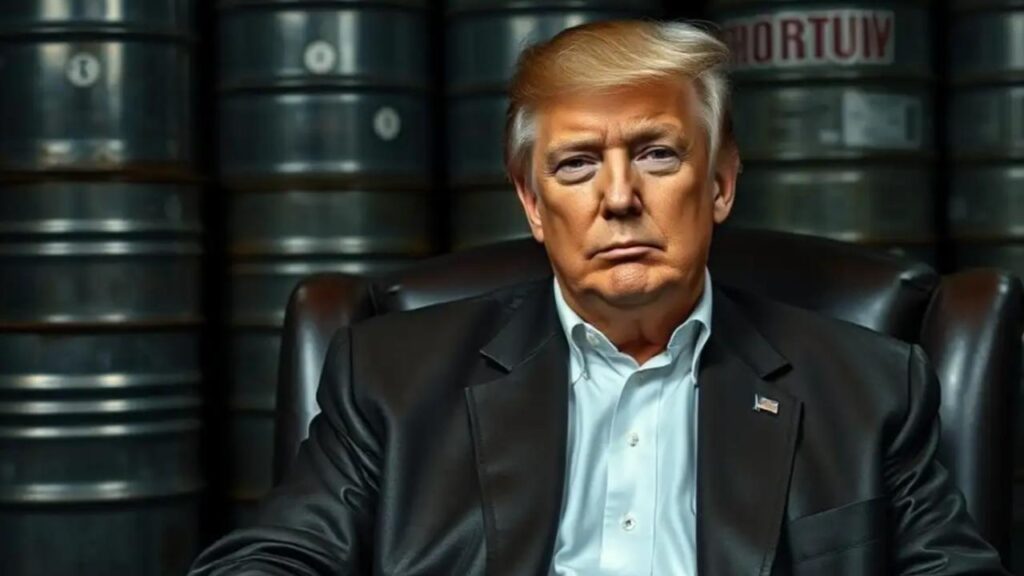In a move few saw coming, former President Donald Trump just turned U.S. energy policy on its head. On June 24, Trump publicly approved China’s continued purchase of Iranian oil—a major reversal from his own earlier sanctions strategy. That surprise announcement has global markets, diplomats, and analysts scrambling to decode what’s really behind the shift—and what he might be planning next.

Trump Shocks World With Stunning Reversal on China‑Iran Oil Deal
| What Happened | Data Point |
|---|---|
| Oil futures dropped after Trump’s statement | ~6% decline on June 24 |
| Prior U.S. policy aimed to cut Iran’s oil sales to zero | February 2025 sanctions campaign |
| Up to 90% of Iran-China oil flows via independent refineries | “Teapot” buyers in China |
Trump’s move might seem like a total reversal, but it may actually be part of a bigger play. By giving China short-term access to Iranian oil, he’s betting on longer-term gains—in diplomacy, trade, and energy.
Whether it works will depend on two unpredictable players: Beijing and Tehran. As for U.S. consumers and producers? They’ll be watching their gas prices—and the headlines—very closely.
What Trump Said—and Why It Matters
On his social media platform, Truth Social, Trump wrote that “China can now continue to purchase Oil from Iran,” calling the move “an important step forward” while nudging Beijing to “hopefully… purchase plenty from the U.S., also.”
That statement sent oil prices plunging almost instantly, with markets interpreting it as a sign of reduced geopolitical risk—and increased supply.
But here’s the kicker: Trump’s remarks came just four months after he reimposed sanctions designed to cut Iranian oil exports to zero. So, what changed?
A Strategic Pivot—or Pure Politics?
The timing of Trump’s pivot raises questions. The announcement came just days after a new ceasefire was brokered between Israel and Iran. While the White House denies that any formal sanctions relief has taken place, analysts believe this could be part of a broader, quieter deal.
There’s also the global oil market to consider. U.S. shale production has surged in 2025, creating a cushion in supply that makes it easier for Washington to tolerate some Iranian oil on the market without risking a price spike.
I used to cover U.S.-Iran sanctions policy during the Obama years, and I’ve rarely seen a move this abrupt or calculated. It’s not just about Iran—it’s also about China and the U.S. economy.
The China Factor: Who Really Benefits?
Trump’s statement seems aimed at opening the door for trade talks with China while still keeping the upper hand. Chinese refineries—especially independent ones known as “teapots”—have long skirted international restrictions to import discounted Iranian crude. With Trump’s apparent blessing, those purchases may increase.

But the real twist? Trump explicitly asked China to buy “plenty from the U.S., also.” That’s the tell.
By nudging China to diversify its oil imports and include U.S. shale, Trump could be setting up an energy-for-trade bargain that helps both economies—while still holding sanctions in reserve.
Domestic and Global Reactions
Not everyone is on board. Critics warn that any loosening of Iran oil sanctions undercuts the leverage needed to rein in Tehran’s nuclear ambitions.
“It’s a dangerous signal,” said a former senior State Department official. “It suggests sanctions are flexible, even when Iran hasn’t changed its behavior.”
Others worry that China might stick with cheaper Iranian oil and skip the American barrels altogether. That would leave U.S. producers in the lurch—and Trump’s strategy could backfire economically.
Meanwhile, there’s still concern about Iran’s long-standing threat to close the Strait of Hormuz, a key chokepoint for global oil. One wrong move, and we could be right back in a price spike situation.
Is This the New JCPOA?
Some are drawing parallels to the Obama-era Iran nuclear deal, also known as the Joint Comprehensive Plan of Action (JCPOA). Trump spent years trashing that agreement. But now, critics say he’s essentially creating a backchannel version of the same strategy—using oil trade as leverage for future nuclear concessions.
What Happens Next?
The ball’s in China’s court. If Beijing increases its U.S. oil imports and reduces reliance on Iran, Trump scores a win. If not, he may pivot again—back to tariffs or tighter sanctions. Meanwhile, the situation in the Middle East remains fragile. The ceasefire could break down at any moment, and if Iran escalates again, Trump’s oil diplomacy could fall apart overnight.






